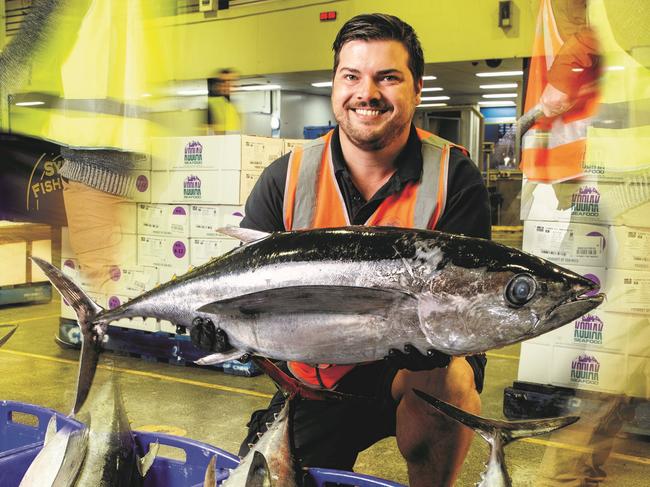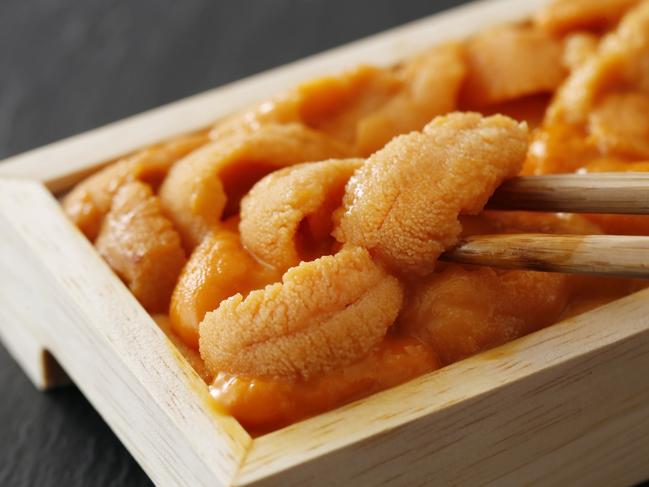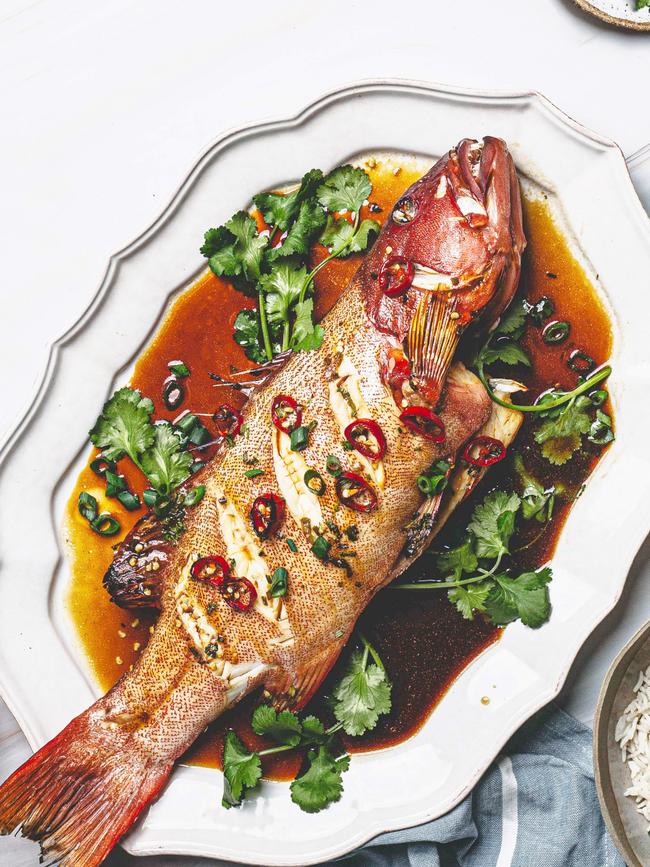Good Friday seafood made better: experts share their top tips
Why sea urchin belongs on your Easter menu, and other tips for a top festive feast.
Food
Don't miss out on the headlines from Food. Followed categories will be added to My News.
BETWEEN floods, labour shortages and king tides, Australia’s fishmongers have had a choppy ride to its busiest day of the year - Good Friday - and this year is expected to be a particularly big one.
“For the first time in two years Australians are able to enjoy a more traditional style Easter
with families and friends coming together to celebrate,” says Seafood Industry Australia CEO Veronica Papacosta. As we break out of our Covid bubble, Aussie diners are also predicted to venture beyond the seafood all-star picks, adding mussels, octopus and calamari to the menu, alongside the usual barramundi, salmon, crab and prawns. “They are becoming more and more popular at Easter because they provide excellent value for money and people are getting more comfortable cooking them,” Papacosta says.
As we ride the wave to the festive feast, we’ve hauled in five top tips to ensure this year’s seafood showdown is the best yet.
1 Urchins rule
Any sea urchin on your Easter shopping list? If not, you’re seriously missing out, according to seafood expert Alex Stollznow from Sydney Fish Market.
Either presented as menacing spike balls, or dissected into tongue-like strips, it’s understandable that few everyday cooks are drawn to sea urchin. However, those who dare, are rewarded with a luxuriously yolky hit of ocean freshness for a bargain price, and a feel-good element to boot.

Considered a delicacy in many parts of the world, they are a marine pest in parts of NSW, Victoria and Tasmania. Warming waters have seen their populations almost double over the past 15 years in some locations, leading to the destruction of kelp forests, and the establishment of sea urchin culling programs. “While you’d pay the equivalent of about $30 each in Spain, Singapore or France, you can get them for around $5 each, live, or buy roe in a punnet, for a fraction of what you’d pay anywhere else on earth,” Stollznow says.
The edible part of the creature is its roe, found in five yellowish ‘tongues’. “It’s basically a creamy seafood sauce ready to go,” says Stollznow, who suggests sweating off crushed garlic and chopped onion in olive oil, and throwing in a few urchin tongues until they ooze apart like melted butter: “with a splash of white wine, lemon juice and chopped parsley, it will glossily coat pasta, creating a world-class meal, while helping the environment and distributing money back into regional Australia.”

2 It pays to substitute
Prawns, salmon and snapper are the go-to species for a celebration feast, but with about 5000 species commercially fished in Australia, it’s worth venturing beyond the usual suspects. “Buy Australian and buy something you’ve never heard of,” Stollznow suggests. “When demand is low, it doesn’t matter how tasty it is, you’ll be getting it much cheaper than it should be worth.” For a flathead stand-in, he suggests gurnard, or latchet, which has a similar shape and a briny, clean flavour. “On a day when flathead fillets are $40 a kilo or more, you’ll pay around $10-$15 for these,” Stollznow says. Similarly, sea mullet can replace salmon in almost any recipe, and boasts similar levels of Omega 3. “They share similar eating qualities, and you’re paying anywhere from a quarter to a sixth of the price,” Stollznow says.
3 Steam and salt
If you’d prefer to stick to tried and true salmon, venture beyond grilled fillets and try either salt-crusting or steaming it whole, suggests chef Guy Turland, of Bondi Harvest. “All that bone marrow and gelatinous goodness releases into the flesh, and you get more bang for your buck,” he says.

Turland suggests mixing up a thick paste of rock salt with water, egg white, lemon and your preferred aromatics, and using it to coat your whole fish. Allow for around 150-200g per person, and bake for 30-35 minutes at 180 degrees. “Once you remove the top layer of salt, you’ll have one whole fillet falling away from the bone,” Turland says. It will save time in the kitchen, and you may even get some leftovers. “You can remove any leftover flesh, mix it with some aioli or make a pate or rillette to have for lunch the next day,” Turland says. “Nothing goes to waste, unlike scraps from individual plates.” Steaming in a basket, over water, or in the oven using a steaming bag, loaded with aromatics, is another way to ensure tender, fuss-free fish. “Cook some seasonal vegetables in the basket beneath, and all the amazing flavours from the fish and aromats will drip into the veg - your main and sides will be cooked at the same time,” Turland says.
4 Your nose knows
Fresh seafood should remain at its prime in the fridge for at least three days, so if you’re joining the Good Friday fish market rush, you can confidently serve it on Easter Sunday. However, make sure you have a good sniff, as fresh seafood should not smell fishy. “Get up nice and close to the opening of the gills - it should smell of the sea,” Stollznow says. “If it smells fishy, it has already started rotting. Cloudy eyes can be a sign that a fish is past its prime, but don’t let them deter you if all other indications look good. “It could just mean that the eye has been in contact with ice,” Stollznow says.

5 Scraps keep on giving
Bins stinking of rotten prawn heads, be gone. Boil up the heads and shells with some bendy vegetables, and you’ll have a delicious stock for a seafood risotto on Easter Monday. The remains, along with fish heads and bones, can later be buried in the garden, beneath around 30cm of soil to mask the smell. “Whatever you grow there will produce for longer, be more vibrant, and present with fewer health problems,” Stollznow says.
Originally published as Good Friday seafood made better: experts share their top tips



